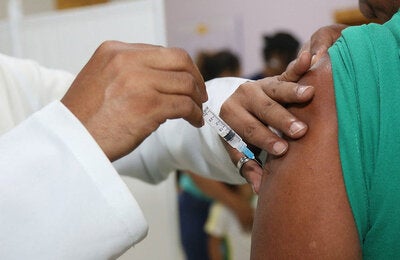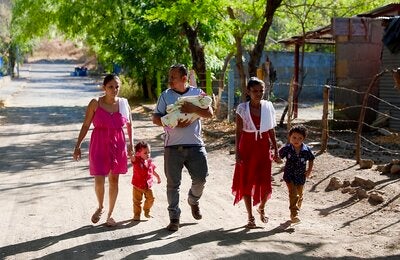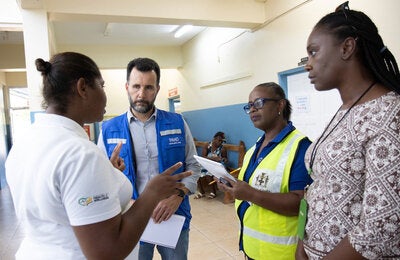The first WHO report on deaths and injuries due to drowning is presented in the Americas, highlighting the need for prevention.
Washington, D.C., June 3, 2015 (PAHO/WHO) - Drowning is among the five leading causes of death among people aged 14 years and under in the Americas, according to the first Global Report on Drowning: Preventing a Leading Killer, published by the World Health Organization (WHO) and presented on June 3 at the Pan American Health Organization (PAHO).
The report reveals that drowning takes the life of 372,000 people around the world every year and is one of the ten leading causes of death among children and young people worldwide. However, experts agree that drowning tends not to be addressed as a public health issue and the report calls for considerably stepped-up efforts and increased resources to prevent drowning, including several measures that national decision-making bodies and local communities should adopt to save the lives of many children and young people.
During the presentation of the report, PAHO Assistant Director Francisco Becerra underscored the importance of finding resources to investigate best practices in the Region of the Americas aimed at preventing deaths and injuries from drowning. Becerra said that "we need to address the deaths by drowning that occur every day, particularly among children. The lessons learned in different interventions to prevent deaths and injuries from drowning are very important in order to address this problem effectively."
Local communities can adopt strategies that include: installing barriers to restrict access to bodies of water; close supervision of infants and children under 5; teaching children basic swimming skills, and training possible bystanders in safe rescue and resuscitation. Interventions at the national level may include: stricter recreational boating, commercial shipping, and passenger ferry regulations; better flood risk management; and comprehensive water safety policies.
The report was launched with the joint participation of WHO and Bloomberg Philanthropies, which financed the report. Kelly Larson, representing Bloomberg's public health program, said the report could help countries change the pattern of deaths from drowning, given the concrete actions it proposes. She added that work continues with other organizations in investigating and determining the best ways to prevent these deaths. She thanked WHO and PAHO for their leadership in the Region on this subject.
David Meddings, of WHO's Department of Noncommunicable Diseases, Disabilities, Violence, and Injury Prevention, pointed out that the subject of drowning is not frequently addressed and that prevention is feasible. "We must keep in mind that about 100 people will die from this cause in the next two hours. And most of the victims are young people in low- and middle-income countries," he said, emphasizing the need to focus on multisectoral solutions.
Other conclusions of the report are:
- Globally, more than half of all people who die by drowning are under 25.
- The highest rates of drowning are among children under 5.
- Men are twice as likely to drown as women.
- Over 90% of drowning occurs in low- and middle-income countries, with the highest rates in the regions of Africa, Southeast Asia, and the Western Pacific.
The report describes drowning prevention projects in certain low- and middle-income countries, including those with high drowning rates, such as Bangladesh, Cambodia, China, Philippines, India, Thailand, and Vietnam. It recommends that these initiatives be implemented and monitored systematically in order to determine the best practices and implement those that yield the best results, scaling them up or down, as appropriate.
Adnan Hyder, Director of the Injury Research Unit of the Johns Hopkins Bloomberg School of Public Health, explained the project now underway in Bangladesh; and Kate Carr, President of Safe Kids Worldwide, discussed other drowning prevention experiences, some of them in countries of the Americas. Neal Brandes of USAID and Brent Davidson of the United States Department of Health and Human Services also took part in the panel discussion.
#
The Pan American Health Organization (PAHO) works with the countries of the Americas to improve the health and quality of life of the population. Founded in 1902, it is the world's oldest international public health agency. It serves as the WHO Regional Office for the Americas and is the specialized health agency of the Inter-American system.



